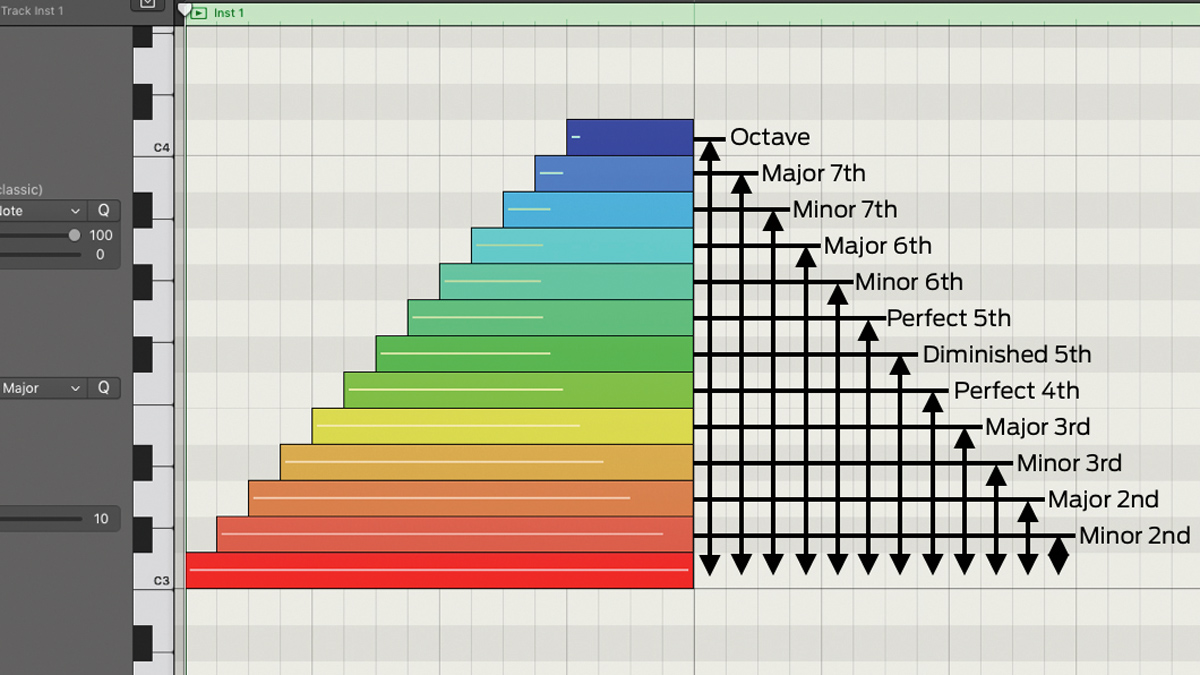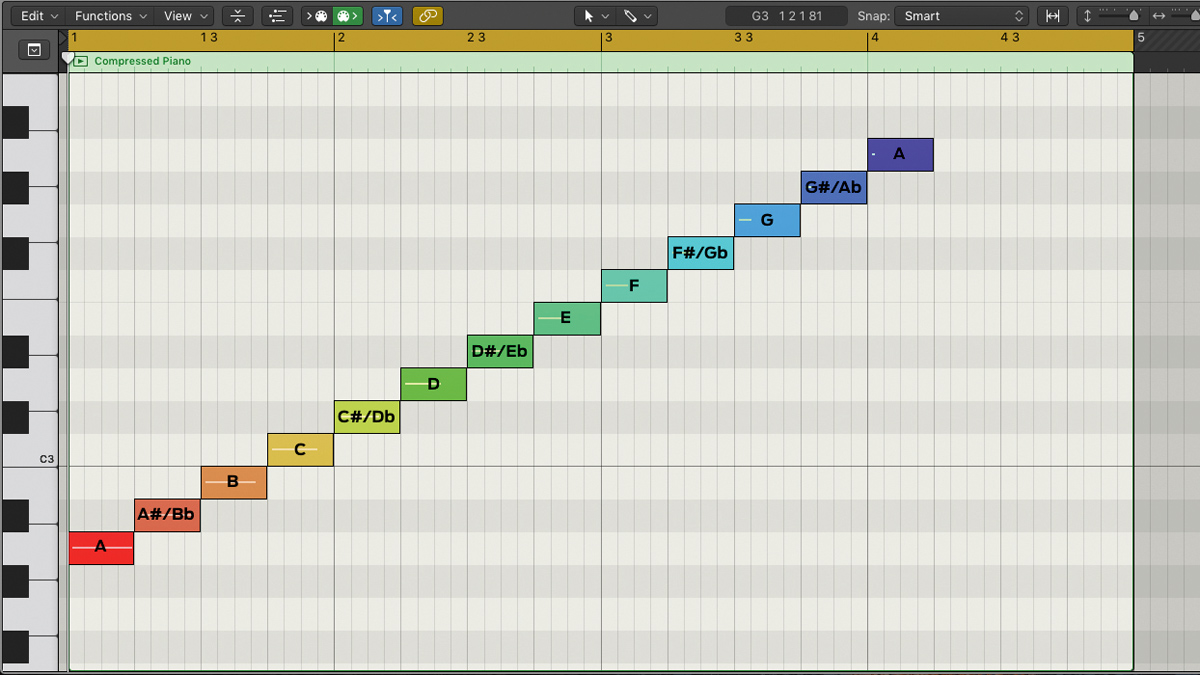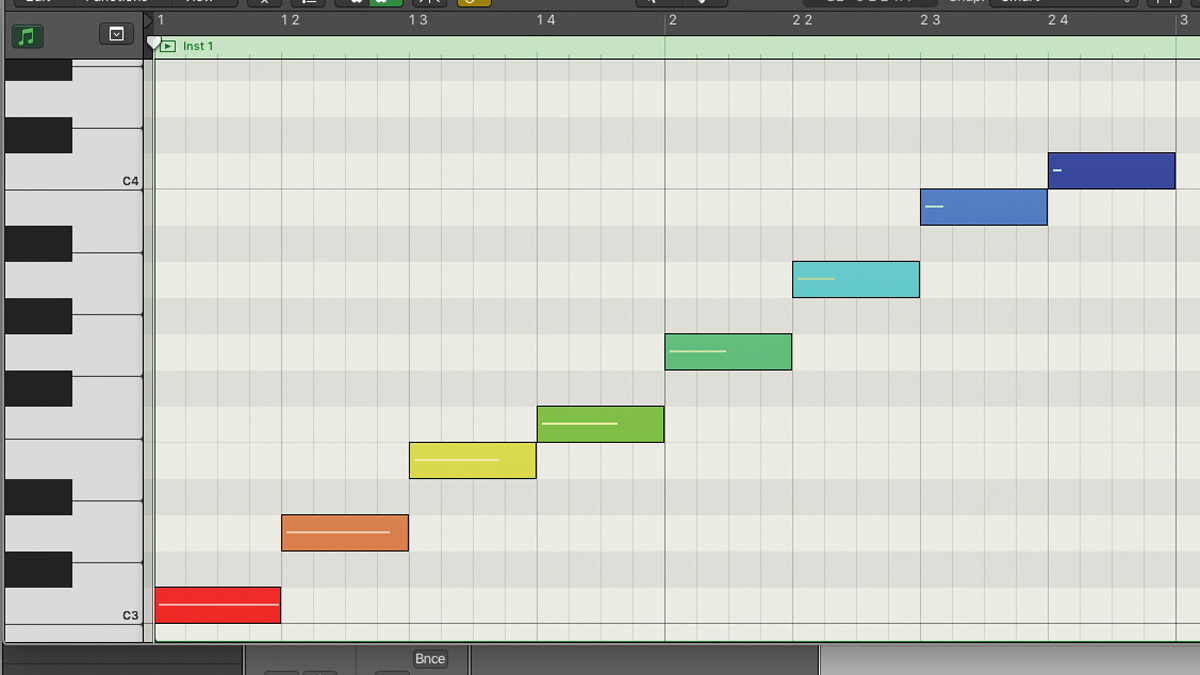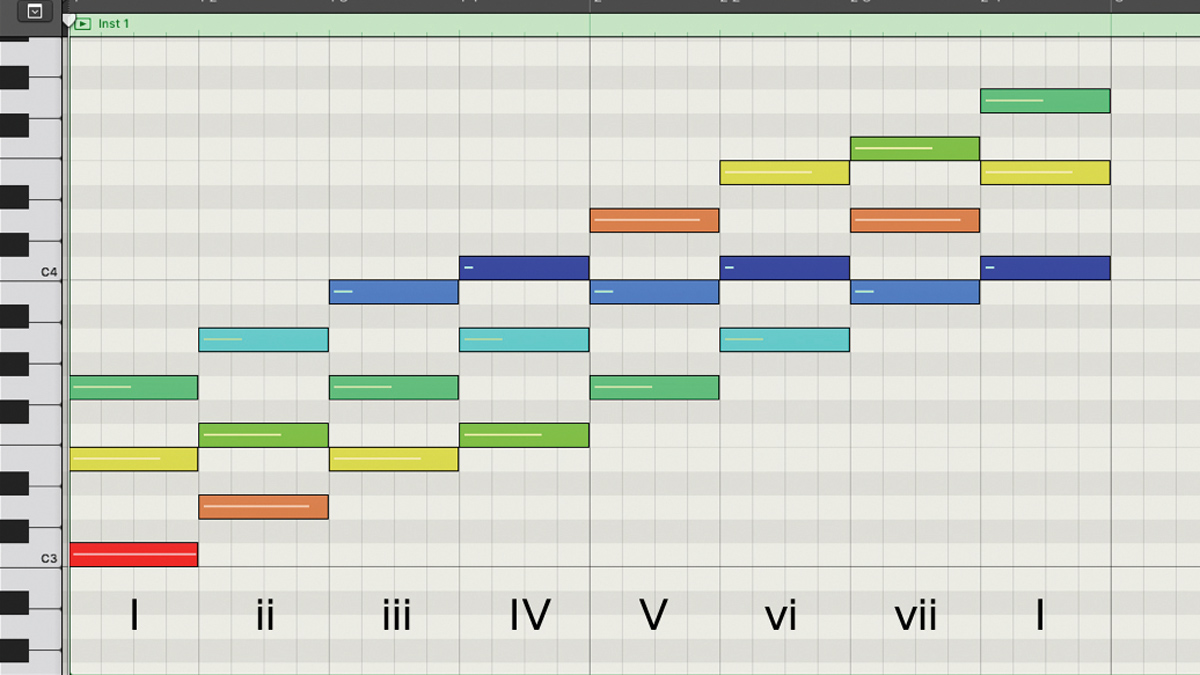
There can be little doubt that understanding how music works can help you to make better music; or, at the very least, make things easier when you’re at the composing stage of your project.
Here, we take things right back to basics by explaining what notes, intervals, scales and chords are, and how they’re all related.

1. Notes
The raw material of music, notes are the building blocks from which all chords and melodies are created.
Each note has a duration and a pitch. In the piano roll, the length of each note event in the display directly relates to its duration, while the pitch is represented by its vertical position.
In Western music, there are a total of twelve notes per octave, named A, A#, B, C, C#, D, D#, E, F, F#, G and G#. The sharp notes, or ‘accidentals’, fall on the black keys, while the regular or ‘natural’ notes fall on the white keys.
As well as sharps, the black keys can also be flats - ie, Bb, Db, Eb, Gb, and Ab. Whether a given note is deemed sharp or flat largely depends on the current scale or key.

2. Intervals
On the piano keyboard, two notes immediately next to each other are a semitone apart in pitch. The distance in pitch between any two notes is known as an interval, and each interval has a particular name, according to its size. For example, an interval of just one semitone is known as a minor second, while an interval of seven semitones is known as a perfect fifth.
The diagram above shows the names of all possible intervals within an octave - they can either be melodic (between a sequence of consecutive notes in a melody) or harmonic (between notes in a chord). If two notes have the same pitch, they’re said to be in unison.

3. Scales
A scale is a sequence of notes (known as ‘degrees’) that provides the raw material for a piece of music. The intervals between the notes follow a set pattern that depends on the type of scale.
The first scale everyone encounters when learning music is the major scale (pictured above), which follows the interval pattern T-T-S-T-T-T-S, where S is a Semitone, and T is a Tone (two semitones). The C major scale is made up of all the white notes on a piano keyboard, but other major scales (starting on different notes) include black notes - G major, for example, contains one sharp note, F#, while F major contains one flat note, B.
The other most common scale is the minor scale, which has the interval pattern T-S-T-T-S-T-T.

4. Chords
A chord is defined as two or more notes sounding at the same time, but in basic theory terms, we generally take it to mean three-note chords, or ‘triads’. In Western music, chords are generally made by stacking up alternate notes from the scale - taking the first, missing the next, taking another, missing one and taking one more.
The image above shows the C major scale from the previous pic now ‘harmonised’ - every chord contains alternate notes of the C major scale. Some of the chords are major (a gap of four semitones followed by a gap of three) while some are minor (a gap of three semitones followed by a gap of four). One of them (vii) is ‘diminished’ (gaps of three and three).







